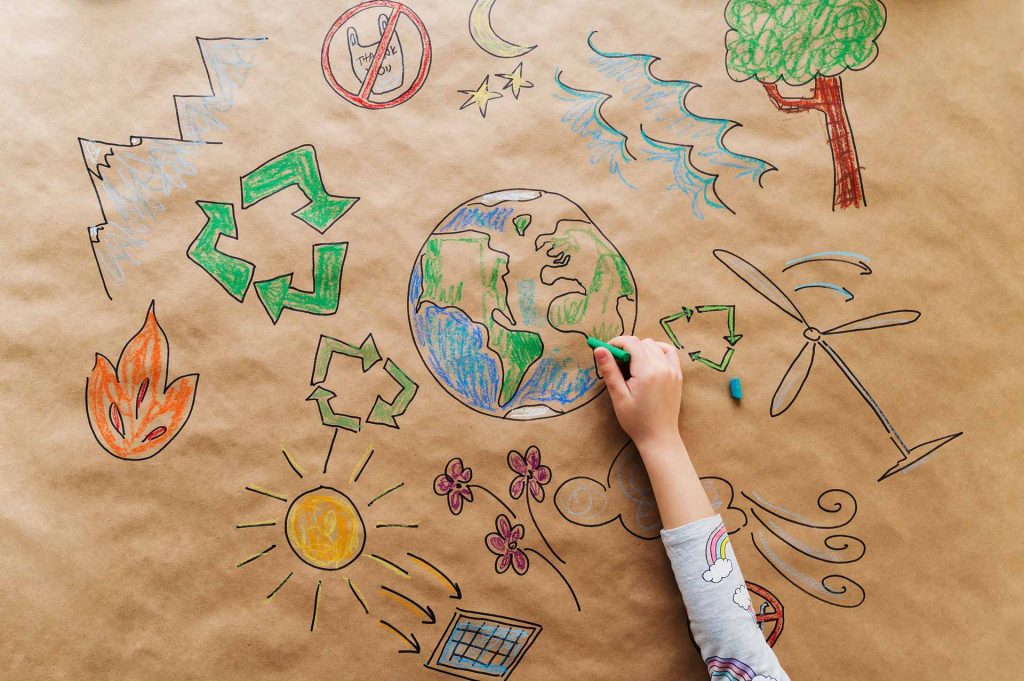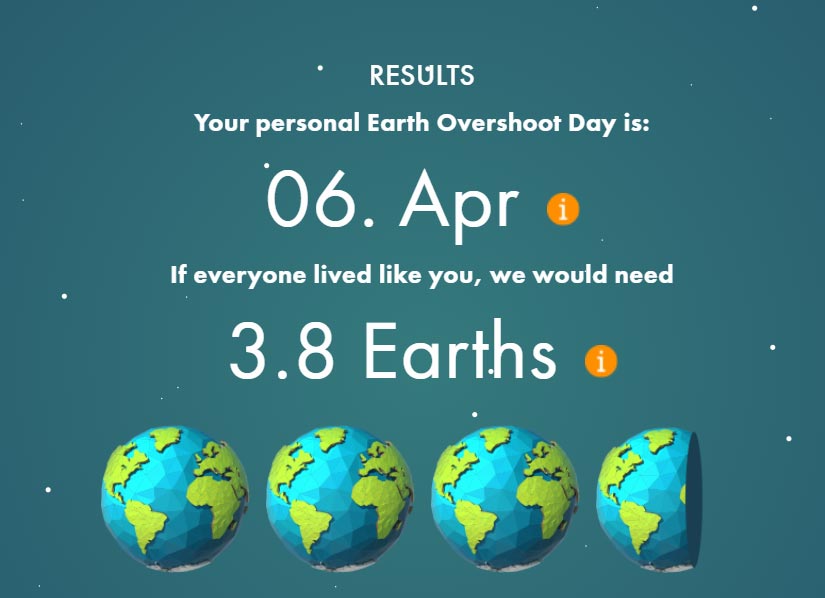
Sustainability for Individuals
Every day, the effects of climate change are becoming more apparent and are impacting us in ways we can no longer ignore. Weather events are becoming more extreme to the point where insurance companies are trying to create strategies to hedge their risks, as it is becoming harder and harder to pay for claims. Wildfires are occurring much more often and are a lot less manageable. Intense draughts are causing lower crop production. While the earth’s climate has been changing for thousands of years, it is only since the beginning of the industrial revolution that climate change has become truly detrimental. The ability for future generation to have the resources to meet their needs will not be possible without a major action to reduce emissions. Based on current projections, NASA has determined we are currently on track for global temperature to raise by 2.5°C to 4.5°C by 2100, which would have disastrous effects on human life. While policy makers and corporations have a part to play in developing solutions for a more sustainable future, individuals need to take accountability for their own actions. The three need to work together to create help a better tomorrow.
Being a Conscious Consumer
Conscious consumption means engaging with the economy with more awareness of how your consumption impacts the society at large, making less impulsive decisions and being thoughtful and purposeful with your actions. Being a conscious consumer can have a significant impact on the environment. Before you purchase something, remember the four R’s: Refuse, Reduce, Reuse, Recycle. Ask yourself the following questions:
- Do I really need this?
- Do I already have something similar?
- Can I repurpose something else?
If you’ve determined you need it, ask yourself:
- Is this the best product that suits my needs and wants?
- Should I invest in quality?
- Can I purchase the product second hand?
- What is the product lifecycle? If it’s a single use item, is there a reusable substitute for it?
- Can this product be purchased locally?
- Am I purchasing from a brand I support?
Remembering that with every purchase, you are casting a vote with your wallet. As people purchase more environmentally friendly products, more of them will become available as corporations will have to adjust to remain competitive. Being a conscious consumer is being aware of this power and yielding it with the utmost discretion.
Calculating Your Carbon Footprint
Your carbon footprint is the total amount of greenhouse gases that are being generated from your actions. Calculating your carbon footprint allows you to identify the major areas in which you are contributing to climate change. You can roughly calculate your carbon footprint through the Global Footprint Network (GFN) here: https://www.footprintcalculator.org/home/en. This easy quiz will allow you to see your personal Earth Overshoot Day, which means if everyone was making the same choices as you, this is the date in which we would have used as much from nature as the Earth could renew in the entire year. The GFN will also breakdown your consumption by category: food, shelter, mobility, goods, and services. This will allow you to see which areas are contributing to your carbon footprint the most, which can guide you to take specific action towards those areas to reduce your personal negative environmental impact.
Think small changes won’t make any difference? See Figure 1 and Figure 2 below. The individual who received the results in Figure 1 has a carbon footprint of 11.8 tons annually, and the individual who received the results in Figure 2 has a carbon footprint of 13.2 tons. The only difference between these two individuals is that one eats meat and dairy products occasionally and the other eats them often. Every other aspect is the same. The person eating meat and dairy products occasionally creates 1.4 tons of carbon equivalents less per year than someone who eats meat very often. While this may seem insignificant, if even 10% of the population switch from eating meat and dairy products often to eating them occasionally, 1.1 billion tons of carbon equivalents will be averted from entering the atmosphere every year.


Figure 1.


Figure 2.
Conducting an At-Home Waste Audit
A waste audit is analyzing what exactly is going into each waste stream in your home. While sorting through trash may not sound appealing, it can lead to understanding where the majority of your waste is coming from and if it is being sorted correctly. Similarly to calculating your carbon footprint, conducting a waste audit will allow you to create customizable solutions to help you personally reduce your negative environmental impact. Before you get started, it is important to research and thoroughly understand what goes in each waste stream. This differs depending on where you live and changes every so often, so it is important to keep up to date. Now it is time to sort your waste into categories. When you are done, you should be able to answer the following two questions:
1.Which are the highest categories?
2.Were there any items that were consistently in the incorrect waste stream?
From here, you will be able to create custom solutions to reduce waste and ensure everything is being sorted properly. For example, if food packaging (non-recyclable thin plastic) is one of your highest categories, consider purchasing food in bulk or from a bulk food store using reusable containers. If shipping boxes is one of your highest categories, make a conscious effort to find products locally instead of ordering online. Using the waste audit, you can easily identify your biggest offenders and make purposeful choices to change your behaviour. It is also important to remember that although waste diversion streams like compost and recycling are helpful, they are not a substitute for waste reduction. According to a 2019 study by Environment and Climate Change Canada (ECCC) only 9% of plastic in Canada is recycled, while over 75% goes to landfill. This is why reducing the amount of waste we create, regardless of the waste stream we sort it in, is very important for reducing our environmental impact.
Conclusion
We cannot afford to wait for policy makers or corporations to solve climate change. The issue is growing too quickly, and we need to take action now. Individuals have the responsibility to take accountability for their own environmental impacts and be advocates for a greener tomorrow. We can actively make choices to reduce our negative impact, or we can choose to continue to allow careless consumption to destroy the planet we call home. The power is in our hands.







